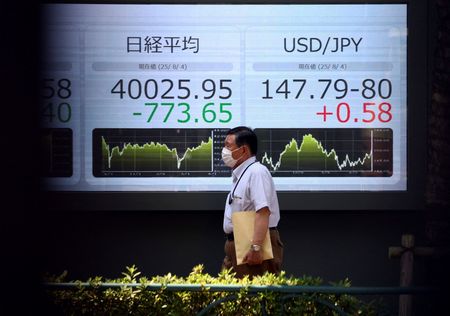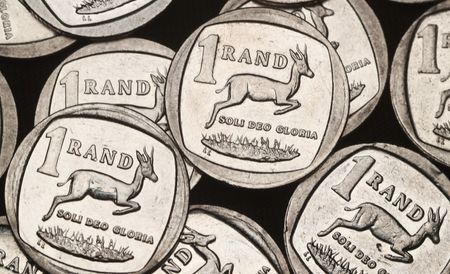By Anjana Anil and Emily Chow
SINGAPORE (Reuters) -Oil prices edged down on Tuesday, after surging nearly 2% in the previous session, as traders closely monitored developments in the Russia-Ukraine conflict for potential disruptions to regional fuel supplies.
Brent crude fell 32 cents, or 0.5%, to $68.48 per barrel at 0448 GMT, while West Texas Intermediate (WTI) crude also lost 33 cents, or 0.5%, to $64.47 per barrel.
Both contracts rose to their highest in more than two weeks on Monday, with WTI climbing above the 100-day moving average.
“The risks for crude oil prices appear tilted toward further gains, particularly if the price sustains a move above the $64–$65 resistance level,” IG analysts said in a note.
Oil’s rally on Monday was primarily driven by worries about supply disruptions as Ukraine struck Russian energy infrastructure, and as traders anticipated more U.S. sanctions on Russian oil.
The attacks disrupted Moscow’s oil processing and exports, created gasoline shortages in some parts of Russia, and came in response to Moscow’s advances on the front lines and its pounding of Ukraine’s gas and power facilities.
Barclays, in a note to clients on Monday, said that oil prices remain in a tight range amid geopolitical volatility and relatively resilient fundamentals.
U.S. President Donald Trump has renewed his threat to impose sanctions on Russia if there is no progress towards a peace deal in the next two weeks.
Traders will also be monitoring the impact of looming U.S. tariffs against India for its continued purchase of Russian oil, said Ole Hansen, head of commodity strategy at Saxo Bank.
Indian exporters are bracing for disruptions after a U.S. Homeland Security notification confirmed Washington will impose an additional 25% tariff on all Indian-origin goods from Wednesday.
This means Indian exports will face U.S. duties of up to 50% – among the highest imposed by Washington – after Trump announced extra tariffs as a punishment for New Delhi’s increased purchases of Russian oil earlier in August.
Traders are awaiting the U.S. inventory data from the American Petroleum Institute (API) later in the day, with expectations pointing to a fall in crude and gasoline stocks but a possible build in distillate inventories. [EIA/S]
(Reporting by Anjana Anil in Bengaluru and Emily Chow in Singapore; Editing by Shri Navaratnam and Himani Sarkar)











